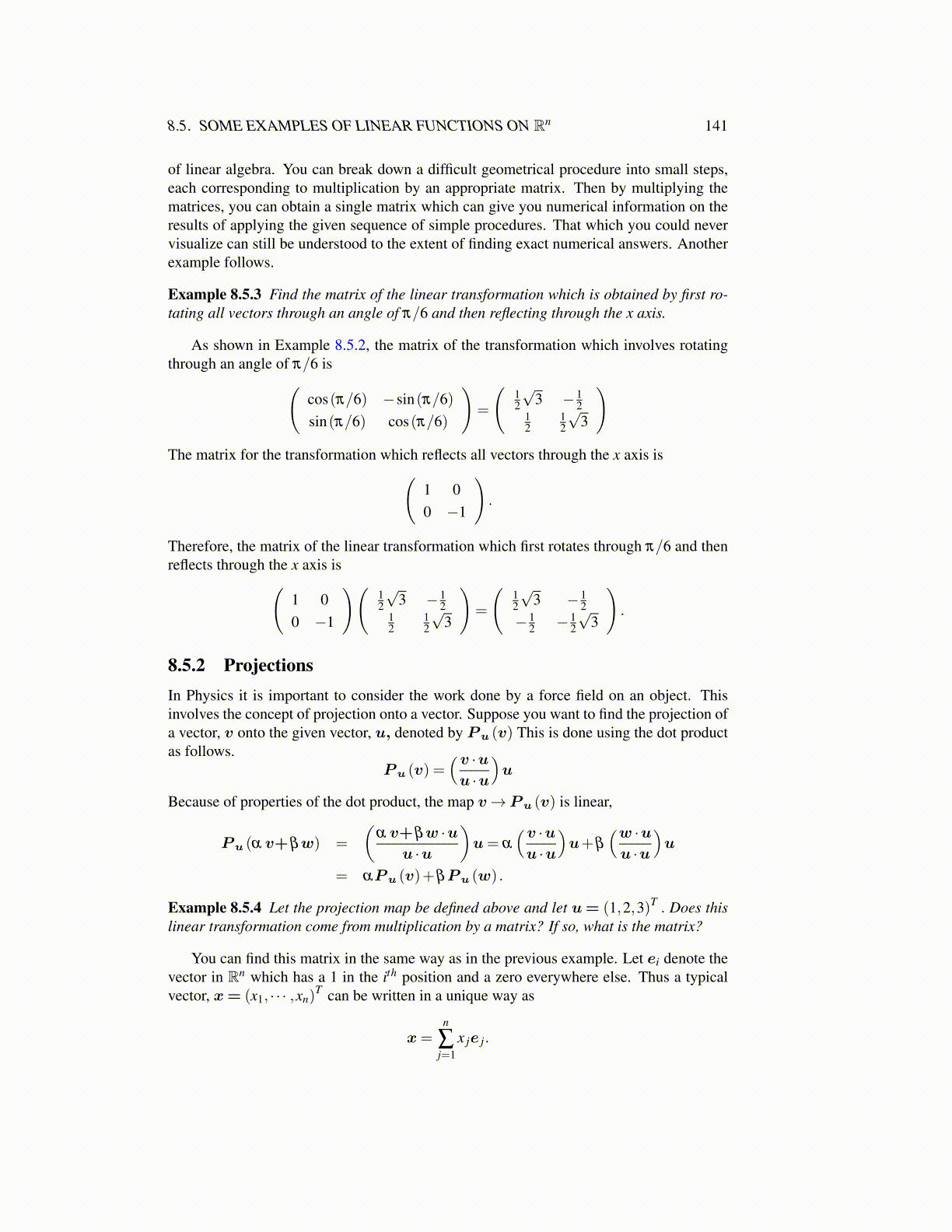
8.5. SOME EXAMPLES OF LINEAR FUNCTIONS ON Rn 141
of linear algebra. You can break down a difficult geometrical procedure into small steps,each corresponding to multiplication by an appropriate matrix. Then by multiplying thematrices, you can obtain a single matrix which can give you numerical information on theresults of applying the given sequence of simple procedures. That which you could nevervisualize can still be understood to the extent of finding exact numerical answers. Anotherexample follows.
Example 8.5.3 Find the matrix of the linear transformation which is obtained by first ro-tating all vectors through an angle of π/6 and then reflecting through the x axis.
As shown in Example 8.5.2, the matrix of the transformation which involves rotatingthrough an angle of π/6 is(
cos(π/6) −sin(π/6)sin(π/6) cos(π/6)
)=
(12
√3 − 1
212
12
√3
)The matrix for the transformation which reflects all vectors through the x axis is(
1 00 −1
).
Therefore, the matrix of the linear transformation which first rotates through π/6 and thenreflects through the x axis is(
1 00 −1
)(12
√3 − 1
212
12
√3
)=
(12
√3 − 1
2− 1
2 − 12
√3
).
8.5.2 ProjectionsIn Physics it is important to consider the work done by a force field on an object. Thisinvolves the concept of projection onto a vector. Suppose you want to find the projection ofa vector, v onto the given vector, u, denoted by Pu (v) This is done using the dot productas follows.
Pu (v) =(v ·uu ·u
)u
Because of properties of the dot product, the map v→ Pu (v) is linear,
Pu (α v+βw) =
(α v+βw ·u
u ·u
)u= α
(v ·uu ·u
)u+β
(w ·uu ·u
)u
= αPu (v)+βPu (w) .
Example 8.5.4 Let the projection map be defined above and let u= (1,2,3)T . Does thislinear transformation come from multiplication by a matrix? If so, what is the matrix?
You can find this matrix in the same way as in the previous example. Let ei denote thevector in Rn which has a 1 in the ith position and a zero everywhere else. Thus a typicalvector, x= (x1, · · · ,xn)
T can be written in a unique way as
x=n
∑j=1
x je j.